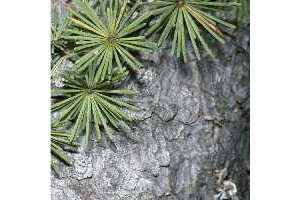Tamarack is a conifer that is deciduous, turning golden-yellow then shedding all of its needles annually in the fall.
Photo Credit: © Robert H. Mohlenbrock, USDA-NRCS PLANTS Database / USDA NRCS. 1995. Northeast wetland flora: Field office guide to plant species. Northeast National Technical Center, Chester.
Larix laricina
Common Name: tamarack
Other Common Names: Alaskan larch, American larch, eastern larch, hackmatack
Plant Functional Group: Deciduous conifer
Class > Order > Family: Pinopsida > Pinales > Pinaceae
